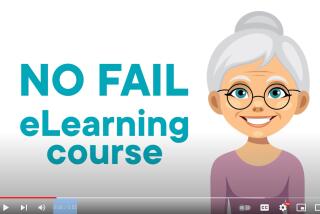Steering Teens Toward Responsibility
- Share via
Handing over the car keys to your teen for the first time can be a pretty scary milestone in a parent’s life these days.
Even more harrowing is watching him or her drive off with a carful of exuberant friends or driving late at night.
Under tough new California driving restrictions that took effect July 1, young drivers with provisional licenses won’t be allowed during the first six months to have passengers younger than 20 unless a licensed driver 25 years or older is present. Nor can they drive between midnight and 5 a.m. during the first year, unless accompanied by a driver 25 or older.
Yet for parents whose kids squeezed through driver’s training and applied for learner’s permits before the deadline, the law offers little comfort. Those teens aren’t covered under the new restrictions. But don’t panic, and don’t throw in the towel on safety for these kids.
Law enforcement officers and experts at the Automobile Club of Southern California advise parents that there’s still hope for guiding these budding drivers. By asserting their parental clout, Mom and Dad can set their own restrictions, modeled after the new law, on the young drivers in the family.
“If they got their license before the July 1 deadline, it doesn’t mean they have the freedom to do anything they want,” says Frank Sandoval, a California Highway Patrol officer and spokesman.
“Parents know their kids more than anybody, and if they feel their teen may be a party-goer or whatever, then setting restrictions would be a great idea,” he says. “Let’s say parents caught them having a beer--then they know they are at a high risk.”
Some teens get behind the wheel at this age and “feel invincible, that nothing will happen to me,” Sandoval says. If your teen is a risk taker, then set limits on when, where and with whom he or she can drive.
Your teens won’t like it. They’ll say you’ve embarrassed them and argue that their social life will be ruined if they can’t drive to that midnight party down the coast. But hold your ground. What’s a little embarrassment if it saves their lives?
*
Look at the statistics, and look at the horrific accidents involving teens driving recklessly. The numbers and photos of the twisted metal of cars say it all.
Nearly 18,000 teens are killed or injured in vehicle crashes each year in California, according to the Auto Club, a sponsor of the law. Nationally, about 35% of all deaths among 15- to 20-year-olds are from car accidents.
Less than 4% of driving by 16- and 17-year-olds occurs between midnight and 5 a.m., yet 13% of their fatal crashes occur during that time.
A study by the Insurance Institute for Highway Safety, a nonprofit group funded by auto insurers, found that in 1996, 16-year-olds died in car accidents at nearly twice the rate reported in 1975.
Often those crashes occur when inexperienced teenagers drive recklessly or are distracted by other kids in the car, says Jeff Spring, an Auto Club spokesman.
The law is designed to give young drivers more experience behind the wheel before they hit the road alone.
“We are looking to save lives, and if parents would follow some of these rules with their teens . . . we’ll get more experienced and safe drivers,” says Carol Thorp of the Auto Club.
It’s too early to measure how effective the law will be in reducing crashes and fatalities involving teens, but the bill’s sponsors hope for a 10% to 15% reduction after the first couple of years, Thorp says.
Parents play a critical role in guaranteeing the success of the law. They are on the “honor system” for certifying the number of hours their teens train behind the wheel.
Before the new law, teens were required only to hold an instructional or learner’s permit for 30 days, and there were no required hours of supervised driving.
And to earn their regular licenses, drivers must be 18 and have no outstanding Department of Motor Vehicles or court-ordered restrictions, suspensions or probation.
*
Here are some tips from the Auto Club for parents who want to teach their teens to be safe drivers:
* Be a good role model. “Teens learn from watching their parents,” Spring says. “Buckle seat belts, don’t drink and drive, and don’t drive aggressively.”
* Encourage communication. When helping your teenagers learn to drive, encourage them to comment on what they see and how they will react.
* Do your homework. When selecting a route on which to teach your teens, drive it in advance so you can tell them what to expect.
* Stay calm. “If you’re agitated, you’ll get them agitated,” Spring says, “and the greater the likelihood a mistake could be made.”
*
Jeanne Wright cannot answer mail personally but will attempt to respond in this column to automotive questions of general interest. Write to Your Wheels, 1875 I St. N.W., No. 1100, Washington, DC 20006. Via e-mail: highway1@latimes.com.






